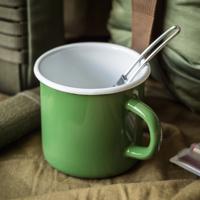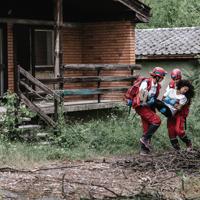Bread has been a staple of human survival for centuries. In times of uncertainty or when resources are scarce, knowing how to make a basic, nutritious bread can be invaluable. With just a few ingredients, you can create bread that provides essential energy and is long-lasting.
Understanding Survival Bread
Survival bread isn’t about gourmet flavors or perfection. It’s about practicality. Often referred to as “hardtack” or “ship’s biscuit,” survival bread has been consumed by sailors and pioneers alike. Its simplicity and long shelf life make it perfect for emergency situations.
Basic Ingredients for Survival Bread
The beauty of survival bread lies in its minimalism: it requires just three ingredients:
- Flour: All-purpose flour works best, but whole wheat flour can add a nutritional boost.
- Water: Clean, potable water is essential.
- Salt: Just a pinch to improve flavor and preservation.
Step-by-Step Recipe
-
Mixing Dough:
- Combine 2 cups of flour and 1/2 cup of water in a bowl. Stir until a stiff dough forms. If the dough is too sticky, gradually add more flour.
- Add a pinch of salt for flavor and preservation. -
Kneading:
- Knead the dough on a floured surface for about 5-10 minutes until smooth. -
Shaping:
- Roll the dough out to about 1/2-inch thickness. Cut into small rectangles or circles, akin to biscuits. -
Baking:
- Preheat your oven to 375°F (190°C).
- Place the bread on a baking sheet and pierce each piece with a fork to prevent it from puffing up.
- Bake for 30-40 minutes or until dry and lightly brown. -
Cooling:
- Allow the bread to cool completely before storing it in an airtight container. Properly stored, survival bread can last for months.
Enhancing Your Bread
While traditional survival bread is basic, consider these variations for added nutrition and taste:
- Seeds and Nuts: Add flaxseeds or chopped nuts for a protein boost.
- Herbs: Enhance flavor with dried rosemary or thyme.
- Sweeteners: For a slight sweetness, mix in a teaspoon of honey or sugar.
Practical Uses
Survival bread serves as a durable food option during emergencies, camping trips, or backpacking adventures. It pairs well with soups or toppings like peanut butter or jam for added nutrition.
For more historical insights, you might find this Smithsonian article about hardtack interesting.
The Humble Role of Survival Bread
Survival bread is a testament to human adaptability. This simple recipe supports nourishment even in the toughest circumstances, serving as a reminder of our resilience. Always remember, the best survival tool is often our creativity when working with limited resources.



